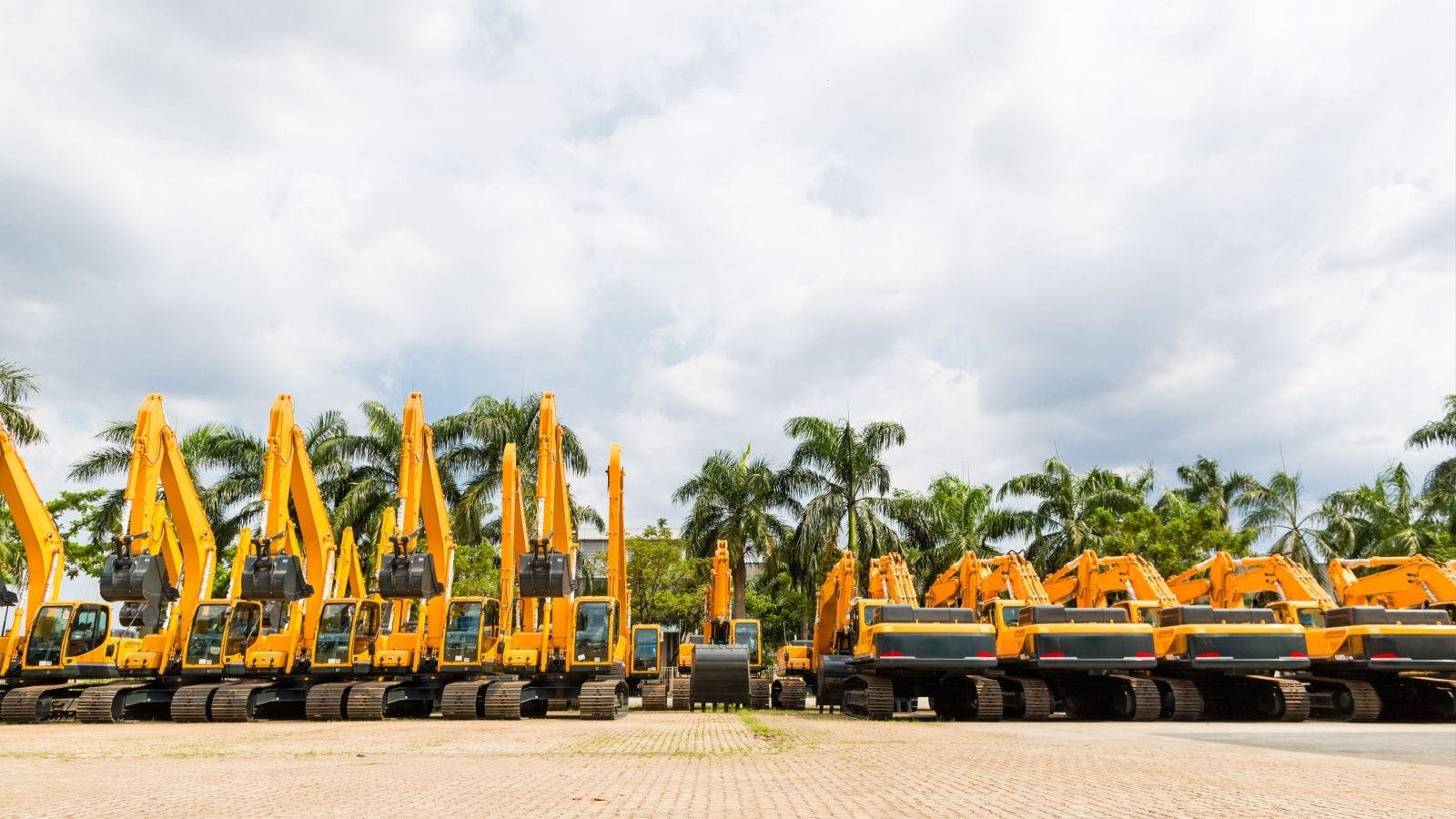
Reality Capture Helps Build Green and Save Green
It’s well documented that buildings consume resources, and worldwide statistics show that buildings are responsible for around 40% of energy and process-related CO2 emissions, 50% of all extracted materials, 33% of water consumption and 35% of generated waste. These shocking statistics have inspired change towards greener methods.
Green construction refers to better management of these unsustainable processes. It represents a fundamental shift in the way the world thinks about buildings and their role in shaping society including building processes that are not only sustainable but regenerative and which actively contribute to the health of the planet. Green construction represents a future where buildings are not just energy-efficient but net-zero or even energy-positive, producing more energy than they consume.
Sustainability awareness from construction companies, their investors and their customers alike is growing. For many, that represents a significant shift in tradition and, as with any change, misconceptions around the topic are rife. It is essential to debunk these myths and encourage a better understanding of green construction methods, as they are crucial for promoting sustainable and environmentally responsible practices in the building industry.
While technological and industrial progress has, in many ways, been a contributing factor to climate change, technology will also provide a number of the solutions we need to combat it. Scanning technology and digital twins—which can create prefabricated building components, manage materials and energy usage and provide data on building performance to identify areas of improvement—are linchpins of the sustainable future of the construction industry.
Myth-Busters
The idea that green building is more expensive than its traditional counterpart has been disproved many times in the last few decades. In 2011 for example, a report by the U.S. General Services Administration titled "Green Building Performance" analysed 22 green federal buildings and found that, on average, these buildings outperformed their traditional counterparts regarding energy use and costs.
In 2013 the World Green Building Council published a report titled "The Business Case for Green Building", which showed that green buildings can lead to various financial benefits, including reduced energy and water costs and improved occupant productivity and wellbeing.
As early as 2003, studies demonstrated that while sustainable construction brings a slight increase in upfront costs in comparison with traditional methods, this marginal increase of about 2% on average pays for itself, with a life cycle savings of 20% of total construction costs, more than 10 times the initial investment.
Increased technological capabilities permeate every industry, so digital advancements cannot and will not be avoided in construction. The notion that green construction is just a trend has been countered repeatedly by the industry’s willingness to adopt greener practices. A study conducted this year by Ramboll found that 98% of all respondents consider sustainability important for successful business operations; 92% have specific targets to reduce the carbon footprint of their buildings; and 61% have an increased focus on repurposing the existing building stock.
A report conducted by Hexagon this year demonstrates the connection between reaching sustainability goals and investing in technology. The study reported that 34% of business leaders in the sector consider sustainability their biggest business priority in the next three to five years while the industry will invest $162 billion in autonomous technology in the next three years.
Digital Twins
By having a digital twin in play from the design to the construction to the operational phase of a building’s life cycle, it is possible to minimize not only material waste by prefabricating components and manufacturing them offsite in a controlled environment but also the amount of rework required through real-time insights of the project within its digital twin. Fewer lorries will visit the building site, reducing transport emissions. In addition, if the building needs to be moved or the site is redeveloped in the future, it can be more easily modelled in a new location saving on demolition costs.
By using reality-capture technology to create a digital twin of a building, energy efficiency can be monitored in real-time, leading to significant cost savings and reduced energy bills over time, with buildings requiring less energy to operate than traditional structures thanks to passive energy techniques.
What’s more, green buildings are designed to breathe. They improve indoor air quality and promote healthy and harmonious indoor environments that support human health and wellbeing.
Zero-Emission Housing
Projects that center around a modular construction process and digital twin of the building can benefit from less material waste and energy consumption, lower energy and material costs and higher build quality minimizing repairs in the future.
Prex, a sustainable construction company based in Kobe, Japan, is dedicated to attaining sustainable development goals, including offering zero-emission houses that reduce CO2 emissions to zero over the home’s life cycle; compact, inexpensive houses; and even off-grid housing that combines solar power generation and storage batteries for self-sufficient electricity. Prex recognized the need to develop more accessible and sustainable housing to improve quality of life and standard of living, so, using a robotic total station and software designed for construction, they developed and now deploy precast foundations, achieving an extra short construction period—the total project can be completed in less than 30 days.
The Circular Economy
As the world grapples with the challenges of climate change, the circular economy approach is also becoming a focus for construction. A circular economy is based on ‘make, use and reuse’ principles instead of ‘make, use, dispose of’,’ encouraging operations to maximize resources while minimizing waste and reducing emissions. Currently, only 40% of construction waste is recycled or reused. This is where reality-capture technology can make an impact. Surveyors and architects can create digital twins of existing buildings, identifying and documenting assets that can be sustainably reused and recycled.
The Future of Green Construction
Green construction provides a vision of a future where buildings are not just structures but living systems that are intricately connected to their surroundings. The metaverse and Hexagon’s Smart Digital Reality™ are underpinned by reality-capture technology. A smart digital reality is a 3D space rooted in the real world, that provides a complete line of sight to the ever-changing conditions on a jobsite to boost efficiency, productivity and quality for construction firms. This digital landscape is infused with real-time data inputs, so as the world changes, those changes are reflected in its digital counterpart. This feedback loop is constant. When physical site changes are made, sensors capture and reflect this information digitally.
By leveraging the power of real-time data and analytics, smart digital realities are set to simulate the impact of various materials, technologies and building systems, giving designers first-hand knowledge of the most sustainable and efficient solutions. Moreover, with the ability to create, store and share data in the metaverse, architects, engineers and builders can easily collaborate, breaking down traditional silos and accelerating innovation. Such widespread change is set to shape our future—not just for the benefit of the planet but for construction firms to stand out from the crowd and attract the next generation of employees.
Preserving the Planet
Digital twins and laser scanning also foster a deeper appreciation for the history and heritage of existing buildings. Surveyors and architects can use reality-capture technology to identify and address maintenance in historic structures to coexist alongside new buildings.
Water Solutions Pvt Ltd., for example, a company specializing in surveying and environmental services, employed cutting-edge tools from Hexagon Geosystems including laser scanning, a robotic total station and a GNSS rover to create a highly detailed 3D representation of the Malé Hukuru Miskiy, the significant Friday Mosque in the Maldives, with the goal of achieving UNESCO World Heritage status.
This digital dataset not only aids in preserving the 350-year-old site and planning future restoration but also has educational applications, enabling the creation of 3D models and virtual reality experiences to teach about Maldivian history and traditional architecture. This effort marks the first use of laser scanning technology for heritage documentation in the Maldives, showcasing its potential for future preservation projects.
By preserving or repurposing historical structures, the construction industry can contribute to the preservation of cultural heritage all while creating new opportunities for economic growth and social development.
Related stories








